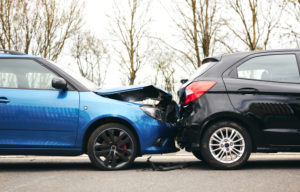What Happens to Your Body in a Rear-End Collision?
 Often called a fender bender, rear-end collisions are extremely common forms of car accidents that can be relatively minor compared to something like a head-on collision. However, that doesn’t mean these crashes can’t have serious consequences for your body. The force of the impact can cause a range of injuries beyond what you might have realized before you visit the auto accident clinic. Many people think they can walk away from these collisions unharmed, but being aware of exactly what happens to your body can bring into focus how serious these crashes can be.
Often called a fender bender, rear-end collisions are extremely common forms of car accidents that can be relatively minor compared to something like a head-on collision. However, that doesn’t mean these crashes can’t have serious consequences for your body. The force of the impact can cause a range of injuries beyond what you might have realized before you visit the auto accident clinic. Many people think they can walk away from these collisions unharmed, but being aware of exactly what happens to your body can bring into focus how serious these crashes can be.
The Physics of Being Rear-Ended
The majority of rear-end collisions happen when one car is stopped and another car hits them from behind. This is often at a slow speed, though it’s possible it could be at higher speeds in certain cases. But even a car moving 20 miles per hour can transfer a huge amount of momentum onto the human body.
When your car is hit from behind, both you and your car are jerked forward suddenly. Assuming you have on a seatbelt, your body is snapped into place equally suddenly, causing both your spine and your head to crash into the seat behind you. There is not enough time to brace for the impact, so your head snaps forward and then backward as a part of this motion. This motion, also known as whiplash, is the cause of many car accident injuries.
In addition to your head and spine being jerked violently, your internal organs are experiencing something similar. Your organs move in their cavities, slamming into the rigid structures that protect them, like the skull or the ribcage. If this is severe, it can even rupture or tear the organ.
Seatbelts and Airbags
Both seatbelts and airbags are safety features in your car, and they save countless lives every day, but they do have their own risks like injuries caused by seatbelts.
In higher-speed rear-end collisions, your seatbelt will prevent you from being ejected entirely from your vehicle. However, they also exert the force that causes the jerking motion of your head, whiplash.
Likewise, airbags deploy to protect you from blunt force or ejection and they are extremely effective. But because they deploy so quickly, they can cause broken bones, facial damage, or even concussions.
The benefits of both these features outweigh the risks, but they may be important components of your injuries following a rear-end collision. The best way to avoid these negative effects is to sit straight, with your feet on the floor and your seatbelt buckled properly.
Signs of An Injury After a Rear-End Collision
Many of the injuries common in these crashes will have delayed symptoms, meaning they don’t become obvious for hours or days. The adrenaline from the crash can cause your body to mask any pain, only allowing you to notice it when these effects wear off. For this reason, even if you feel completely okay, you should always visit an auto accident clinic as soon as possible. A doctor will know what signs to look for before you feel the symptoms and be able to intervene and begin treatment early before your injuries can worsen.
Without treatment, even mild injuries could become more serious or lead to chronic pain. This is why it’s critical to seek care as early as possible.
Any soreness in the back, neck, or head is the first sign you should visit an auto accident clinic. This may be accompanied by nausea, stiffness, or a tingling and numb sensation. These are all signs of common spinal injuries that should be treated by a chiropractor.
Severe head pain, abdominal pain, loss of consciousness, or bleeding should be seen by emergency care.
Care After Being Rear-Ended
If you’ve been rear-ended, you may be frustrated and worried about minor damage to your car. While you certainly could have been in a worse accident, that doesn’t mean you can go without medical care. The effects of being hit in a vehicle on the body are serious, sometimes even traumatic, and it’s unlikely that your body has no damage from that experience. Even if your spine simply needs to be realigned, it is important to rule out more serious concerns and avoid future pain.
